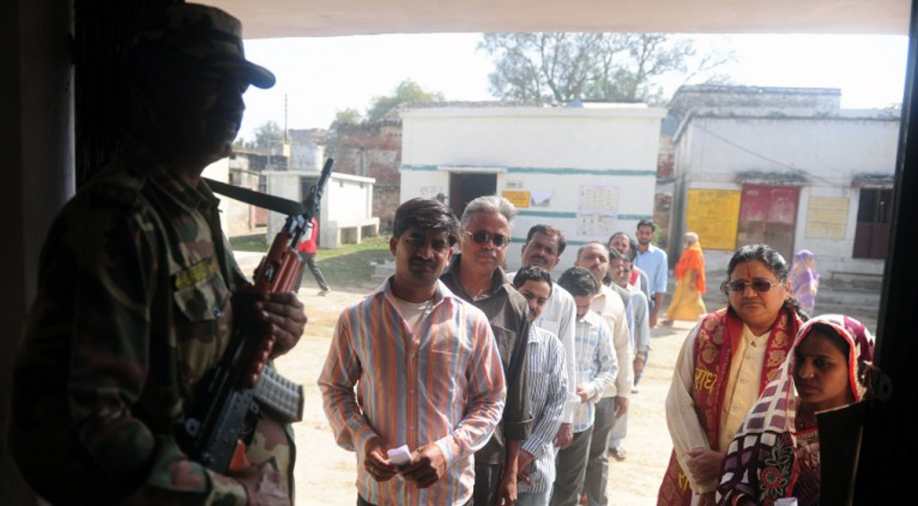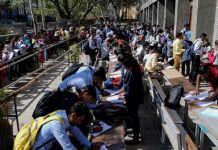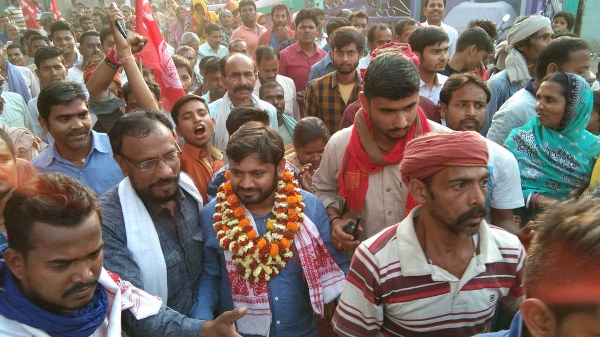The recent bout of violence in poll bound Chhattisgarh; once again brings us face to face with the question of whether violence can be a means to social justice and in the absence of State led dialogues with anti-electoral forces can the cycle of allegations and counter-allegations ever stop. The historically deprived Adivasis of Central India surely deserve an answer.

[dropcap]A[/dropcap] question that has often been debated in the academic circuits is whether Maoist violence can really be an answer to state disillusionment and can be a tool for social transformation. This theme has had a perennial appeal for a long time with people supporting and opposing Maoist violence. Recently, a series of attacks sponsored by the Maoists in poll bound Chhattisgarh have once again made the urgency of discussing the question widely felt.
The incidence has brought to the forefront the debate about whether the use of violence as a tool of political reformation can bring about sustained societal transformation. We have faced this question time and again as the violence in several Naxal dominated areas in recent times has led to brutal killings of civilians and destruction of public property and disturbed the functioning of the administration.
Recently, the violence that has unfolded in Chhattisgarh has compelled us to ask whether violence can be the sole method to attain societal transformation or is it the most desired path. It cannot be denied that the unfolding of the democratic system is flawed and there needs to be enough accountability to ensure that the functioning of the nation-state is pro-poor and not pro-rich but does that mean that violence can be the cure to the flaws in the system?
Can violence change the society and the culture that we live in; can it be the answer to the inadequacies of democratic infrastructure? Can the assassination of ordinary civilians and men and women wearing a uniform ensure justice for the poor and the marginalised people?
We have not forgotten the killing of Achyutanand Sahu, the Doordarshan cameraperson along with two police personnel earlier in this month in Dantewada District by Moist forces, is the killing of such innocent lives sure to attain sustained peace and justice?
The blast that came about just four days before Chhattisgarh entered into polling has also led to the death of four civilians and a CISF soldier. The Maoist attack in Dantewada which had been preparing to host its elections became the third in the series of Maoist attacks this month.
We all know that Maoism as a political doctrine opposes electoral democracy and believes in the urgent necessity of doing away with the political system by brutally overthrowing it. The only mechanism that is seen viable to challenge the hegemony of the state is counter-violence.
The idea that armed insurrection can be the only force to defeat the Indian state has been a perpetual one. It would not be wrong to say that even the slightest encroachment into the Maoist territory by an outsider is met by violence that is justified in the name of political ideology. The civilians who are caught in between the crossfire are brutally murdered and this is seen as nothing more than a resultant outcome of a higher political cause.
It is ironic that the Maoists have expressed regret while claiming responsibility for the brutal attack but will this apology ensure that they don’t resort to such violence in the future?
The conflict between the nation-state and the Maoist forces has put the commoner Adivasi in a perpetual state of delirium where neither can he expect the development initiated by the state in terms of education, employment or healthcare to reach to the remotest Adivasi village nor can he move about freely with the fear of being seen as a traitor by the Maoists.
The Adivasi population living in Maoist dominated regions of Central India is a victim of the sustained war between the state and the Maoists. They are caught between the heavily armed security personnel who represent the state and the weapon owning Maoists who assert that they represent the dignity of the poor
These are mineral rich areas and this has meant that the rapid process of industrialisation accentuated by the pull of liberalisation has made markets encroach deeper into the forests. Ironically, despite the fact that more people from the outside world now come to claim the resources of the area, the local inhabitants have not seen their lives changing.
The sheer poverty, malnutrition, illiteracy and the absence of state infrastructure have led to the deprivation of the people. Decades of displacement due to energy projects and dams, sustained afforestation and mining have together generated a scenario where the Adivasis are perpetually impoverished.
The governments have changed but no one has bothered to build the basic infrastructure of education, healthcare and employment. The rapid forces of liberalisation have further distracted the state from its welfare agenda and thus little has been done to improve their lives.
Industrialists and corporate houses with tie-ups with the government have extracted enormous profits from these mineral rich states but the indigenous people of the state continue to be deprived.
It is impossible to talk about the condition of the Adivasis living in Central India without paying attention to violence that is sponsored by the state. The Adivasi people constantly face brutalities and harassment by the police; in fact the initiation of the Salwa Judum was an epitome of the state’s violent anti-Adivasi agenda.
The Supreme Court has banned the existence of the organisation but it cannot be negated that several synonymous organisations operate even now. The ordinary people of the region are suffering as on the one hand there is state sponsored violence and on the other hand there is Maoist violence.
While we cannot deny the fact that one of the key goals of the origins of the Naxalbari movement was to aim at the redistribution of land resources and seizure of excessive land during 1967- the primary focus of the movement has now become organised violence.
The radical spark of the movement has now become taken over by the urgency of violent outbreak. It must be understood that in such a scenario it has become completely impossible to mobilise people and to struggle with them.
The possession of huge level arms, the disillusionment with the government, the lack of sustained leadership and the inadequate efforts made by the government to negotiate with the Maoists has led to stagnation within the situation.
This is a strange cycle into which the people have been caught – the more the state concentrates on weaponisation and violates the rights of the Adivasis in the name of protecting them from Maoist insurgency the more will be the number of Maoist attacks.
It is ironic that while both the parties are working in the name of the people none seems to be working for them. One of the most important concerns of the nation-state at this juncture should be to protect the lives and livelihoods of the indigenous people.
The Adivasis have long borne the brunt of state- Maoist conflict and this has enhanced their deprivation historically. The time has arrived to renew the principles of true democracy and concentrate on building crucial infrastructure for the people that penetrates to the grassroots.
It is time that the democratic leadership of the nation steps out of its comfort zone and mingles with the pains and aspirations of the ordinary men and women. The Maoists must realise that killings cannot be the path to long standing peace and justice. Democracy must be for the people and not at the cost of people.














